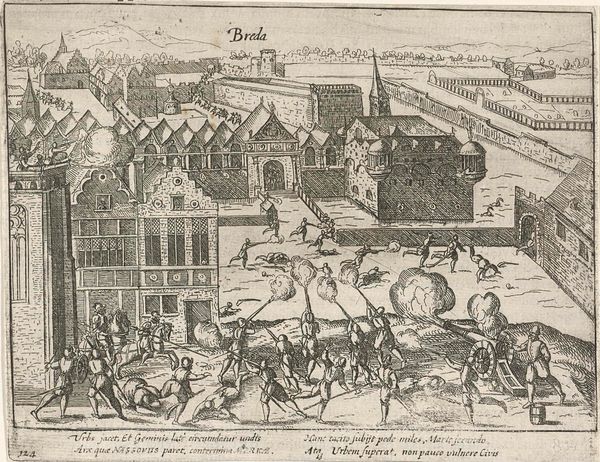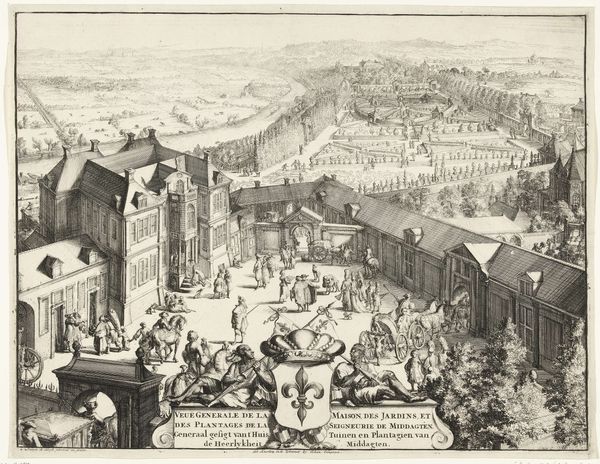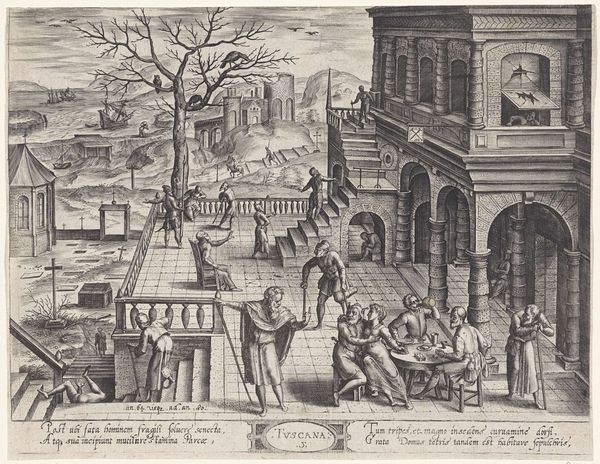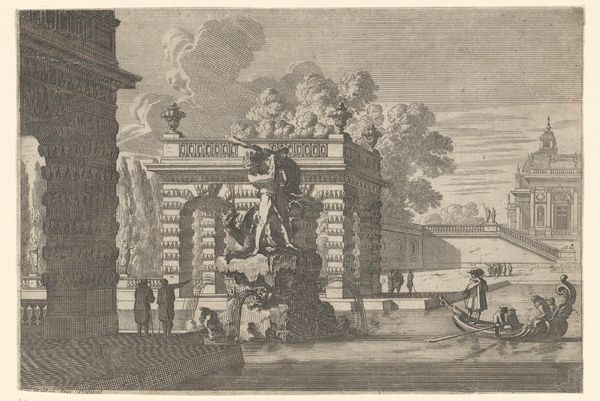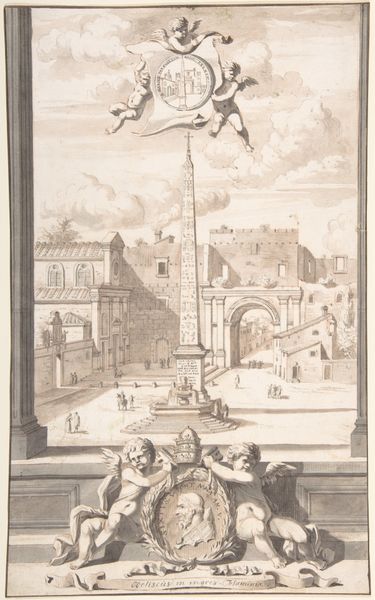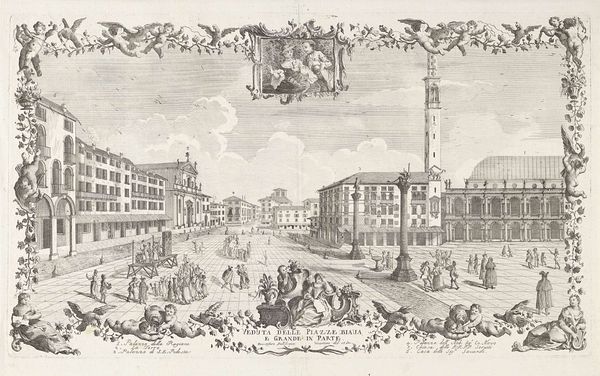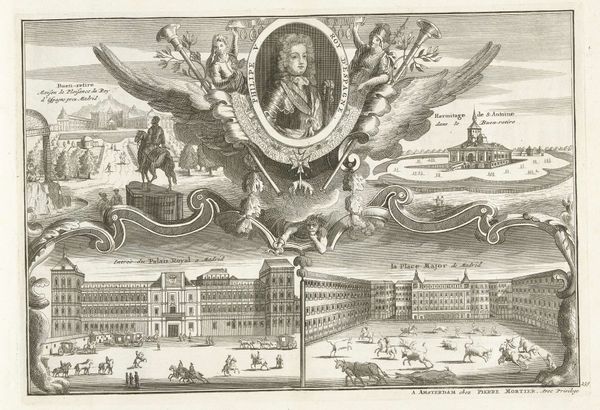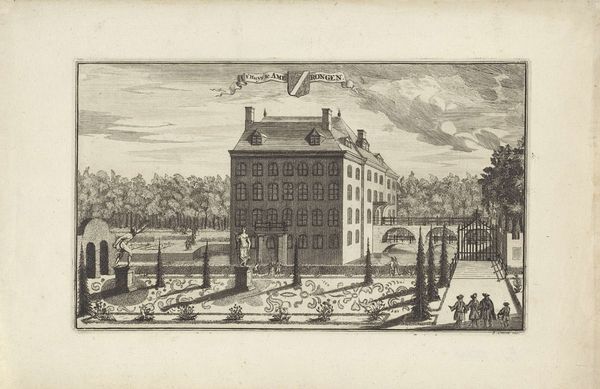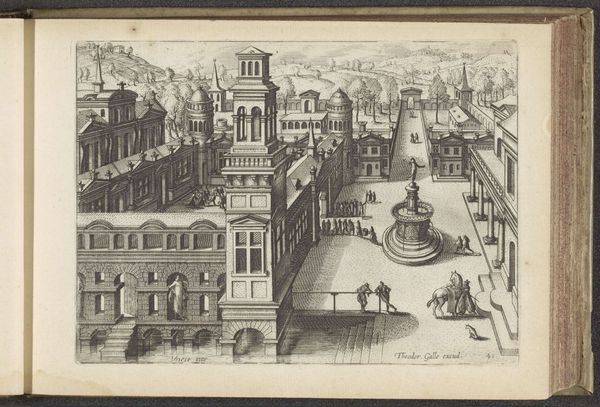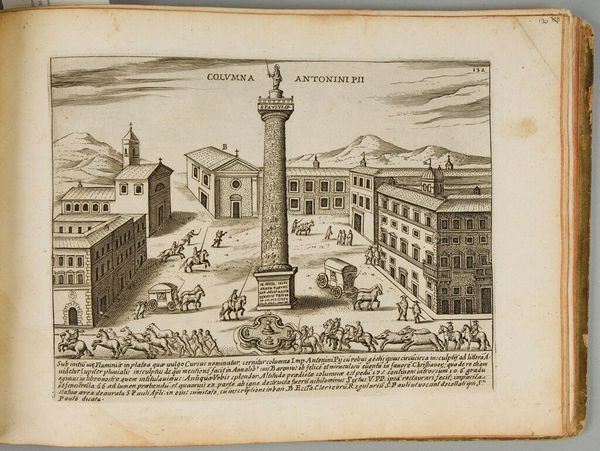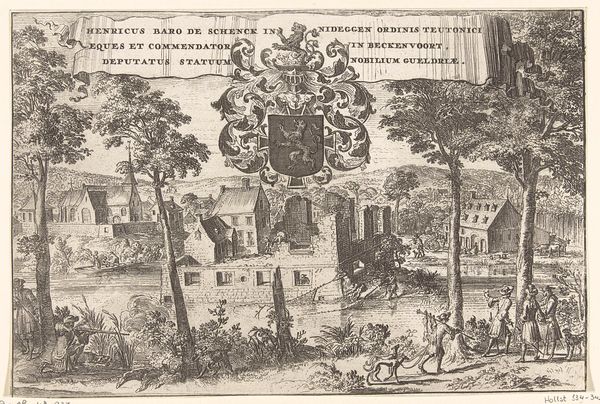
print, engraving
#
baroque
# print
#
landscape
#
cityscape
#
history-painting
#
engraving
Dimensions: height 368 mm, width 477 mm
Copyright: Rijks Museum: Open Domain
Curator: Today we're looking at a fascinating print by Lievin Cruyl, titled "Gezicht op het Colosseum en de boog van Constantijn," or "View of the Colosseum and the Arch of Constantine" from 1696. Cruyl was a Flemish artist active in Rome, and this work offers us a birds-eye view of the city. Editor: My initial impression is one of stark contrasts. The delicacy of the engraving highlights the ruins' crumbling textures against the more orderly urban scene, emphasizing decay amidst supposed civilization. There is a strange distance created by the panoramic view and elevated vantage point, making it difficult to fully absorb the details of its history. Curator: Indeed. Cruyl presents us not just with specific monuments, but with Rome as a palimpsest of history. Notice how the classical ruins, especially the Colosseum, are presented in a state of romantic decay, hinting at the passage of time and the cyclical nature of empires. The inclusion of the Arch of Constantine, with its own layered history of repurposed imagery, reinforces this theme. There's almost an allegory built into the cityscape. Editor: Yes, it’s a very constructed view, isn't it? Look how he uses linear perspective, with orthogonals converging toward the center to organize disparate elements within the same frame. See how the scale and relative distance create an artificial feeling of cohesiveness and continuity when, of course, there are breaks in the timeline. It’s carefully constructed; the angel and the title inscription almost serve as visual bookends. Curator: And consider the angel floating above, carrying what appears to be a coat of arms. This symbolizes both divine oversight and the authority of the papacy, Rome’s temporal power after its Imperial grandeur waned. The buildings are more than structures; they represent shifts in power and belief. Cruyl’s print freezes a moment where the weight of antiquity presses against a burgeoning early modern city. Editor: Thinking about the print as a designed object, one can feel the artist pulling you into its pictorial space as a whole and carefully maneuvering through distinct sections like architectural rendering, urban planning, landscape panorama, symbolic emblems, et cetera. Curator: Absolutely. Cruyl, through the lens of Baroque sensibilities, invites us to meditate on themes of time, ruin, and rebirth within the enduring landscape of Rome. Editor: It's as much a symbolic cartography of historical consciousness, shaped as a piece of crafted artwork, than an objective depiction of urban architecture and cityscapes.
Comments
No comments
Be the first to comment and join the conversation on the ultimate creative platform.
